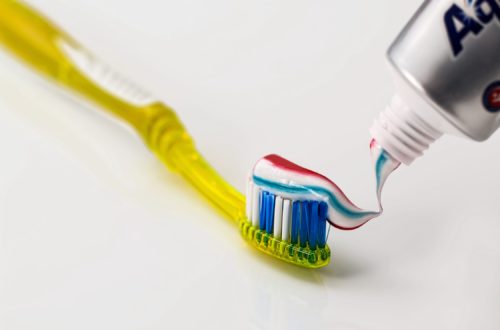Symptoms, Diagnosis, and Treatment Options for Mechanical Dry Eye
As we grow older, the tissues of the body lose their elasticity, which can lead to various problems such as mechanical dry eye. Mechanical dry eye is most common in people above 60 years old and is usually characterized by wrinkled folds in the conjunctiva, which can be visible at the margin of the eyelid. The condition is also known as conjunctivochalasis and may be symptomatic or asymptomatic. Below is more information on the symptoms, diagnosis, and treatment for mechanical dry eye.

Symptoms Of Mechanical Dry Eye
The symptoms of mechanical dry eye may not be spotted easily at first, but with time, they may become clearer since it is usually a gradual process. Some of the most common symptoms include:
Blurry Vision
Blurry vision refers to the loss of eyesight sharpness, making objects look like they are hazy and out of focus. It is also a very common sign of mechanical dry eye. This condition happens as a result of the eyes coming into contact with the loose skin on the lids, causing irritation.
Eye Irritation
Mechanical dry eyes can cause eye irritation and make a person have a feeling of burning. Some patients also report feeling like they have a foreign object in their eyes. This makes them rub their eyes, which worsens the situation by increasing the irritation.
Dry Eyes
Most people with mechanical dry eyes experience excessive eye dryness, which also causes a person to feel an itchy sensation in the eye. Actually, most people treating dry eyes suffer from mechanical dry eyes without their knowledge.
Watery Eyes
People suffering from mechanical dry eyes may also suffer from watery eyes. This happens when the extra skin from the folds rubs against the eyes and makes them produces excessive tears as it tries to overcome dryness.
Diagnosis Of Mechanical Dry Eye
Mechanical dry eye can be hard to diagnose since it mimics other eye conditions. However, it can easily be detected when an ophthalmologist considers it as a possibility, especially in patients above 60 years old who report symptoms of dry eyes. Mechanical dry eye is one of the most misdiagnosed diseases. It is mostly confused for conditions like dry eye, blepharitis, allergic reactions, and meibomian gland disease.
Several clinical examinations are required to discover mechanical dry eye. An eye specialist may use exams like slit-lamp biomicroscopy to test the condition. During this test, light is shined on the eyes as they are moved around to different angles to check for any abnormality. This test is also used to rule out other possibilities affecting your vision.
The eye doctor may also take photos of the eye to use them for accurate diagnosis. Additionally, they also ask you questions such as your medical history and whether or not you have any allergic reactions that affect your eye.
Sometimes, you may have mechanical dry eyes without any symptoms and even live with it for several years. Symptoms may occur later when the problem has progressed and is at an advanced stage. That’s why it’s crucial to get tested for the condition regularly, especially if you are 60 years or older.
If you think that you have mechanical dry eye, visit an eye specialist for diagnosis and start treatment immediately.
Treatment For Mechanical Dry Eye
There are several options available for the treatment of mechanical dry eye. It’s important to visit an eye specialist for treatment since the condition won’t go away when not treated properly. It might also cause more severe symptoms when not treated promptly. Below are some of the most common treatment options for the condition.
Lubricating Eye Drops
Since mechanical dry eye causes eye dryness, using lubricating eye drops will ease the symptoms and get rid of the feeling of having a foreign body in the eye. The drops also help prevent mucus buildup, which could damage the cornea or result in an infection.
An eye expert will prescribe the eye drops.
Topical Antihistamines
Topical antihistamines are effective at relieving the feeling of itchiness caused by mechanical dry eyes. They are usually available over the counter, but it’s always advisable to see an eye doctor for a prescription. Some of these antihistamines are usually applied to the eye and take only a few minutes or hours to relieve itchiness.
Eyepatches
Eye patches are usually worn at night and are good at easing symptoms of dry eyes. Many people find them effective to use when sleeping after adding lubricating eye drops to relieve eye dryness. They work by retaining moisture in the eyes as a person is sleeping.
Surgery
If medications seem not to be effective in the treatment of mechanical dry eye, surgery might be the only option. The procedure is usually conducted by an eye specialist, under anesthesia, either local or general.
During the surgery, the excess skin on the conjunctiva is removed. An amniotic membrane like the Prokera cryopreserved amniotic membrane is then used to replace it. The membrane also promotes quick healing and prevents discomfort. Additionally, it promotes regenerative healing, suppresses pain, and reduces inflammation.
Mechanical dry eye is a condition that mostly affects older people. It is sometimes misdiagnosed since its symptoms resemble those of other eye conditions. The only way to identify it is by getting tested by an eye specialist. Seeking treatment ensures that you get relief from the unpleasant symptoms this condition causes and also get treated. Treatment may be in the form of medications or surgery. If you’d like to learn more about mechanical dry eye, visit https://discovermde.com/.


